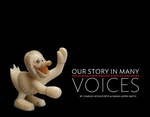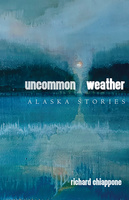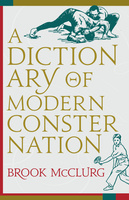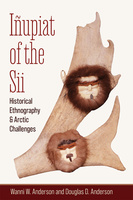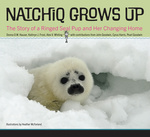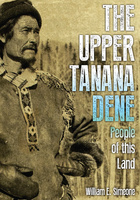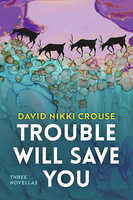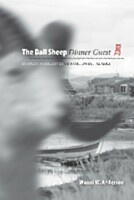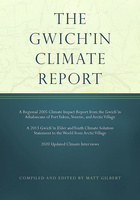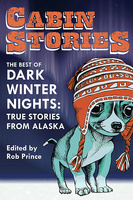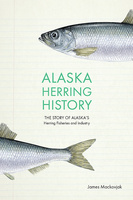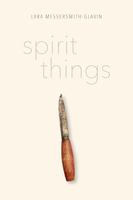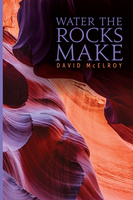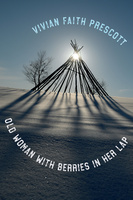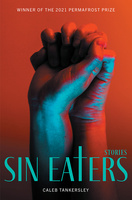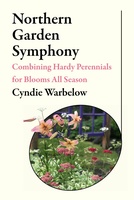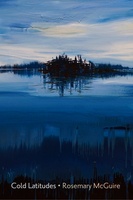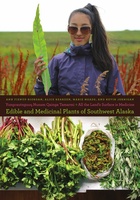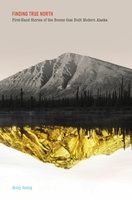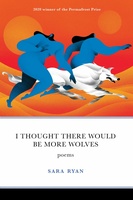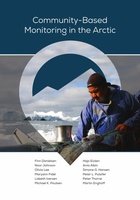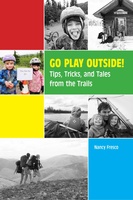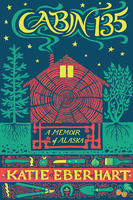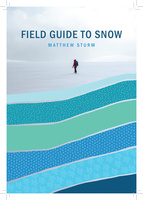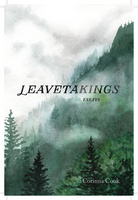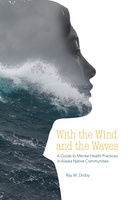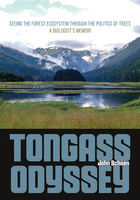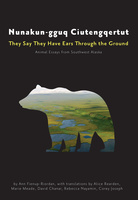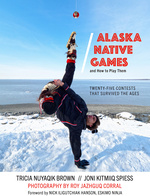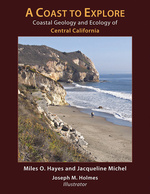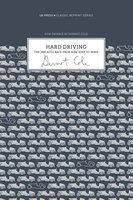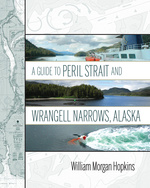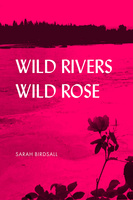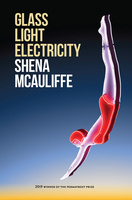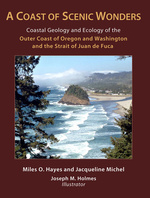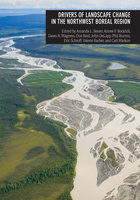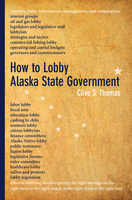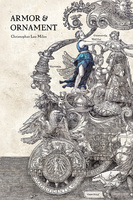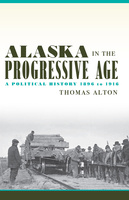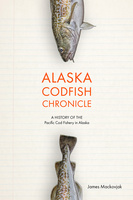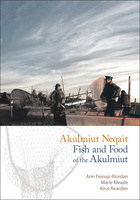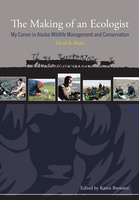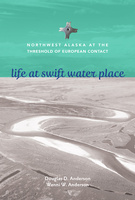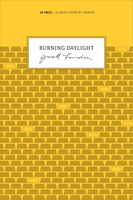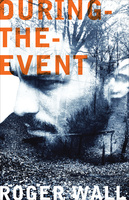Our Story in Many Voices
The Alaska State Museum Catalog and Guide
Alaska preserves and exhibits its own culture and history in the Andrew P. Kashevaroff Building in Juneau, the home of the State Library, Archives, and Museum. With this catalogue and guide, the meaning of the museum exhibits gains new depth.
A Dictionary of Modern Consternation
This cheeky dictionary-shaped exploration is a genre-bending nonfiction lyric following one family through the years from the financial crisis to the COVID-19 pandemic.
Gagaan X'usyee/Below the Foot of the Sun
Poems
Identity and understanding are fluid and plural, yet the histories of violence and oppression influence and shape everything in the world because the past, present, and future exist in the same plane and at the same time. Gagaan Xʼusyee / Beneath the Foot of the Sun is a unique collection of Indigenous cultural work and Lingít literature in the tradition of Nora Marks Dauenhauer, and in the broader contemporary company of Joy Harjo and Sherwin Bitsui.
Stronger Together / Kammanatut Atausigun / Iknaqataghaghluta Qerngaamta
Bering Strait Communities Respond to the COVID-19 Pandemic
A collection of first-person narratives offering a vivid, nuanced look at the lived and shared experiences of Bering Strait communities in the COVID-19 era, Stronger Together is a unique collaboration between the Carrie M. McLain Memorial Museum in Nome, Alaska, and over forty community members, artists, and poets from across the Bering Strait region.
Iñupiat of the Sii
Historical Ethnography and Arctic Challenges
Iñupiat of the Sii is a firsthand account of Wanni and Douglas Anderson’s lived experiences during eight field seasons of archaeological and ethnographic research in Selawik, Alaska, from 1968 to 1994.
Natchiq Grows Up
The Story of an Alaska Ringed Seal Pup and Her Changing Home
This is the story of Natchiq, the ringed seal pup, growing up in her snow cave on the sea ice in northern Alaska with her mom Siku.
The Upper Tanana Dene
People of This Land
The Upper Tanana Deneconveys the history and knowledge of Dene elders to current and future generations.
Dall Sheep Dinner Guest:
Inupiaq Narratives of Northwest Alaska
The Gwich’in Climate Report
A regional climate impact and adaptation report from the Gwich'in Athabascans of Interior Alaska,
The Gwich’in Climate Report is a compilation of transcribed interviews between Matt Gilbert and northern Alaska Gwich’in Athabascan community members, elders, hunters, and trappers.
Cabin Stories
The Best of Dark Winter Nights: True Stories from Alaska
Cabin Stories: The Best of Dark Winter Nights: True Stories from Alaska is a collection of favorite stories selected by the executive producers of the hit live event, radio show, and podcast Dark Winter Nights.
Alaska Herring History
The Story of Alaska’s Herring Fisheries and Industry
Alaska Herring History is a thoroughly researched, well-documented, and comprehensive chronicle of Alaska’s herring fisheries.
Spirit Things
Northern Garden Symphony
Combining Hardy Perennials for Blooms All Season
Yungcautnguuq Nunam Qainga Tamarmi/All the Land's Surface is Medicine
Edible and Medicinal Plants of Southwest Alaska
Finding True North
First-Hand Stories of the Booms that Built Modern Alaska
Community-Based Monitoring in the Arctic
Go Play Outside!
Tips, Tricks, and Tales from the Trails
The Wake of the Unseen Object
Travels through Alaska's Native Landscapes
With the Wind and the Waves
A Guide to Mental Health Practices in Alaska Native Communities
Tongass Odyssey
Seeing the Forest Ecosystem through the Politics of Trees
Nunakun-gguq Ciutengqertut/They Say They Have Ears Through the Ground
Animal Essays from Southwest Alaska
A Coast to Explore
Coastal Geology and Ecology of Central California
Hard Driving
The 1908 Auto Race From New York to Paris
A Coast of Scenic Wonders
Coastal Geology and Ecology of the Outer Coast of Oregon and Washington and the Strait of Juan de Fuca
Drivers of Landscape Change in the Northwest Boreal Region
The northwest boreal region (NWB) of North America is a land of extremes. Extending more than 1.3 million square kilometers (330 million acres), encompasses the entire spectrum between inundated wetlands below sea level to the tallest peak in North America. Permafrost gradients span from nearly continuous to absent. Boreal ecosystems are inherently dynamic and continually change over decades to millennia. The braided rivers that shape the valleys and wetlands continually change course, creating and removing vast wetlands and peatlands. Glacial melt, erosion, fires, permafrost dynamics, and wind-blown loess are among the shaping forces of the landscape. As a result, species interactions and ecosystem processes are shifting across time. The NWB is a data-poor region, and the intention of the NWB Landscape Conservation Cooperative (LCC) is to determine what data are not available and what data are available. For instance, historical baseline data describing the economic and social relationships in association with the ecological condition of the NWB landscape are often lacking. Likewise, the size and remoteness of this region make it challenging to measure basic biological information, such as species population sizes or trends. The paucity of weather and climate monitoring stations also compound the ability to model future climate trends and impacts, which is part of the nature of working in the north. The purpose of this volume is to create a resource for regional land and resource managers and researchers by synthesizing the latest research on the (1) historical/current status of landscape-scale drivers (including anthropogenic activities) and ecosystem processes, (2) future projected changes of each, and (3) the effects of changes on important resources. Generally, each chapter is coauthored by researchers and land and natural resource managers from the United States and Canada.
100-word description:
The northwest boreal region (NWB) of North America is a land of extremes. Extending more than 1.3 million square kilometers (330 million acres), encompasses the entire spectrum between inundated wetlands below sea level to the tallest peak in North America. The purpose of this volume is to create a resource for regional land and resource managers and researchers by synthesizing the latest research on the (1) historical/current status of landscape-scale drivers (including anthropogenic activities) and ecosystem processes, (2) future projected changes of each, and (3) the effects of changes on important resources. Generally, each chapter is coauthored by researchers and land and natural resource managers from the United States and Canada.
One sentence description:
This book was produced to provide a synthesis of the latest research on the historical/current status of landscape-scale drivers in the Northwest Boreal region of Alaska and western Canada for regional land and resource managers, researchers, and the general public.
How to Lobby Alaska State Government
This is a guide to the essentials of organizing and implementing a lobbying campaign in Alaska. It will be particularly useful to anyone coming to lobbying for the first time. Besides the novice, it will be valuable to those who’ve had mixed successes in lobbying in the past, as well as professional lobbyists looking for new perspectives on their business. The theme of this guide is that good lobbyists are students of human nature. Lobbying is a communications industry based on personal relationships and the ability to present information in the most effective way. In essence, effective lobbying requires getting the right message over to the right people in the right form at the right time. All lobbyists need to understand the basics of politics, how state government is organized and those who run state government. To provide this, the first part of the book explains: how to think politically; the structure and operation of state government, including the all-important budget process; the psychology and needs of public officials; and where the power lies in Juneau—who’s got the political clout. Then the book it gets into the nitty-gritty of a lobbying campaign. It covers: the basics of group influence, campaign planning and management, the pros and cons of various group tactics, including using a lobbyist, joining a coalition and protests and rallies, tips on face-to-face meeting with politicians and other public officials, and how to deal with the challenges of lobbying day-to-day. Even with all this guidance, like any guide to lobbying, using this handbook is no guarantee of success because at bottom lobbying is an art and not a science. The uncertainties of politics mean that sometimes even the most influential interest groups in Alaska, as elsewhere, lose their lobbying battles, including the oil industry and business interests. Nevertheless, what this handbook does do is explains the factors that can lead to lobbying success. Almost as important, it emphasizes the things to avoid that will undermine, and perhaps destroy your chances of success.
100-word description:
This is a guide to the essentials of organizing and implementing a lobbying campaign in Alaska. It explains the factors that can lead to lobbying success. Almost as important, it emphasizes the things to avoid that will undermine, and perhaps destroy your chances of success. This handbook will be particularly useful to anyone coming to lobbying for the first time. Besides the novice, it will be valuable to those who’ve had mixed successes in lobbying in the past, as well as professional lobbyists looking for new perspectives on their business.
One sentence description:
A guide to the essentials of organizing and implementing a lobbying campaign in Alaska.
Armor & Ornament
Alaska in the Progressive Age
A Political History, 1896 to 1916
The growth of modern-day Alaska began with the Klondike gold discovery in 1896. Over the course of the next two decades, as prospectors, pioneers, and settlers rushed in, Alaska developed its agricultural and mineral resources, birthed a structure of highway and railroad transportation, and founded the cities we know today. All this activity occurred within the context of the Progressive Age in American politics. It was a time of reform as Progressive politicians took on the powerful business trusts and enacted sweeping reforms to protect workers and consumers. As the population of Alaska grew, Congress responded to the needs of the nation’s northern possession, giving the territory a delegate to Congress, a locally elected legislature, and ultimately in 1914 the federally funded Alaska Railroad. Progressives believed that government could and should be the agent of reform and a force for positive change in people’s lives. In the traditional view of Alaska history, Alaska is considered to have been continually neglected and abused by the federal government. I contend, however, that in the years from 1896 to 1916 the territory benefitted richly in the age of Progressive Democracy.
Much has been written about the development of modern-day Alaska beginning with the Gold Rush and about the origins of the Alaska Railroad. However, no other study has focused primarily on that history within the context of Progressive Age American politics.
Please give a 100-word description of your book.
In the two decades from 1896 to 1916, Alaska developed its resources, built highways and railroad transportation, and founded settlements that grew into modern cities. These events took place during the Progressive Age of American politics. Progressives believed that government could be the catalyst for reform, and Congress responded by enacting legislation providing for an Alaska delegate to Congress and an elected Territorial Legislature. But the biggest Progressive-era prize of all was the Alaska Railroad bill of 1914, which allocated $35 million to aid in the growth and development of the territory. Rather than neglected and abused by the federal government, Alaska richly benefitted in the era of Progressive politics.
Please give a one-sentence description of your book.
Alaska benefitted richly in the years from 1896 to 1916, when, coincident with the Progressive Age in American politics, the idea prevailed that government at its best could be an instrument for positive social and economic change in people’s lives.
Alaska Codfish Chronicle
A History of the Pacific Cod Fishery in Alaska
While several books have been written about New England’s Atlantic cod fishery, comparatively little has been written about Alaska’s Pacific cod fishery. Alaska Codfish Chronicle is the first comprehensive history of this fishery. It chronicles the fishery from its inception in the early 1860s to the present day.
During the first nearly nine decades of the fishery’s history—what the author terms the Salt Cod Era—cod were caught by dory fishermen using hand lines. Their stories were mostly of hardship and danger. The modern era of Alaska’s Pacific cod fishery began with the passage in 1976 of the Magnuson-Stevens Fishery Conservation and Management Act, under which the United States claimed an exclusive economic zone extending 200 miles from its coasts. “Americanizing” the fishery—replacing the foreign fleets that had been ravaging the groundfish resources in the Gulf of Alaska and the Bering Sea—was a complicated, freewheeling endeavor. Today, the Pacific cod fishery is, in terms of poundage, the second largest fishery in Alaska and is considered among the best-managed fisheries in the world.
For a host of reasons, it is also Alaska’s most complex fishery. Because of the arcane technology often employed by those associated with the commercial fishing industry and the complexity of fishing regulations, fishing industry histories are typically dense This history—which is extremely well documented—does not spare details, but it is written in a manner that makes it accessible to general public. It incorporates nearly a hundred photographs and illustrations and is sprinkled with numerous, often pithy, quotations gleaned from fishing industry journals and reports. And, to add a light touch, it even contains several poems and recipes.
100-word description:
Alaska Codfish Chronicle is a comprehensive history of Alaska’s Pacific cod fishery from its inception in the early 1860s until the present day. It explains the development of the fishery, its structure and management, the technology employed, and the challenges the fishery faces.
This history is extremely well documented and is written in a manner that makes it accessible to those not familiar with the often arcane terminology often employed by those associated with the commercial fishing industry. It incorporates nearly one hundred photographs/illustrations and, to add a light touch, several poems and recipes.
One sentence description:
Alaska Codfish Chronicle is a comprehensive history of Alaska’s Pacific cod fishery, from its inception in the early 1860s until the present day.
Akulmiut Neqait / Fish and Food of the Akulmiut
This bilingual book details the lives of Yup'ik people--the Akulmiut--living in the lake country west of Bethel, Alaska, in the villages of Kasigluk, Nunapitchuk, and Atmautluak. For centuries, Akulmiut have been sustained by the annual movements of whitefish. If there is one food that defines them, it is whitefish.
Although people use the term "whitefish" when speaking in English, there is no direct translation in the Yup'ik language. Instead Yup'ik people use more than a dozen words to talk about the different species, ages, and sizes of "whitefish" in their region.
To this day, many Akulmiut view not only their actions in the world, but their interactions with each other, as having a direct and profound effect on these fish. Not only are fish viewed as responding to human action and intention in many contexts, but the lakes and rivers fish inhabit are likewise viewed as sentient beings with the ability to respond both positively and negatively to those who travel there.
Change is profound in southwest Alaska, but the conversations recorded here--in both Yup'ik and English--are testament to the fact that a uniquely Yup'ik view of the world remains. While many predicted that globalization would sound the death knoll for distinctive traditions, instead indigenous people all over the planet have sought to appropriate the world in their own terms. For all their new connectedness, the continued relevance of traditional admonitions, many feel, cannot be denied.
Elders today suffer over the fact that many contemporary youth do not know their history. They meet this ignorance by actively sharing their view of the world. As the late Johnny Berlin said, "When they read what we've said, they will learn more about us."
100-word description
This book details the relationship between Yup'ik people--the Akulmiut--living in the lake country west of Bethel, Alaska, and the whitefish which for centuries have sustained them.
To this day, many Akulmiut view not only their actions in the world, but their interactions with each other, as having a profound effect on these fish. Not only are fish viewed as responding to human action and intention, but the lakes and rivers fish inhabit are likewise viewed as sentient beings with the ability to respond both positively and negatively to those who travel there. Although much has changed in southwest Alaska over the years, a distinctly Yup'ik view of the world cannot be denied.
one sentence
This bilingual book details the relationship between Yup'ik people--the Akulmiut--living in the lake country west of Bethel, Alaska, and the whitefish which for centuries have sustained them.
The Making of an Ecologist
My Career in Alaska Wildlife Management and Conservation
This life history book provides insight into how David R. Klein combined his life-long love of the outdoors with training in ecology and what has inspired and motivated him throughout his career in wildlife conservation and management in Alaska. The focus is not on his scientific findings per se, but to tell the stories of how this science was done, to show the inspiration behind the research, and to expose the thinking underlying particular scientific theories. In this first-hand account of how science and biological fieldwork has been carried out in Alaska in the last sixty years, Dave discusses his role as the leader of the Alaska Cooperative Wildlife Unit and his research on animal/habitat relationships of Arctic ungulate species (caribou, muskoxen, and reindeer) and their behavior and adaptations to this extreme environment, and highlights work with graduate students, many of whom went on to become successful wildlife managers in Alaska and around the globe. In addition, this book shows the evolution of Alaska’s wildlife management regimes from territorial days to statehood to the era of big oil. The hope is that Dave’s outlook, philosophy, and approach toward sustainability, wildlife management, and conserving our natural world will inspire the next generation to ensure the survival of our fragile planet in an ever-changing global society. The first portion of the book is comprised of stories from Dave’s life collected during oral history interviews, while the latter section contains essays written by Dave about philosophical topics of importance to him, such as eco-philosophy, the definition of wilderness, and the morality of hunting.
100-word description:
This is an innovative and collaborative life history book about one of Alaska's pioneering wildlife biologists. This book is a valuable contribution to our understanding of Alask history and the story of the birth and evolution of Alaska’s wildlife studies programs and wildlife management regimes. This first-hand description of the early days of scientific exploration in Alaska highlights a behind-the-scenes view of how science is done and will inspire younger scientists and conservation activists.
One sentence description:
This is an innovative and collaborative life history book about one of Alaska's pioneering wildlife biologists and provides a behind-the-scenes view of how science is done.

